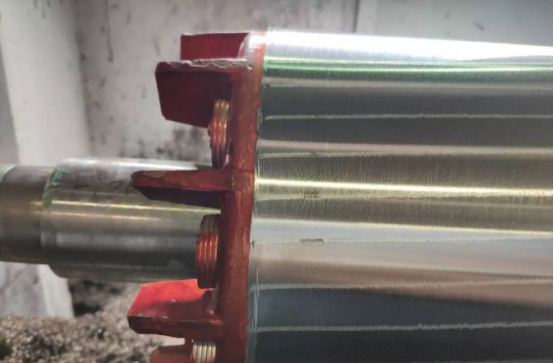With the continuous pursuit of motor efficiency, closed-slot rotors are gradually recognized by motor manufacturers. For three-phase asynchronous motors, due to the existence of stator and rotor grooves, the rotation will produce pulsation loss. If the rotor adopts closed slot, the effective air gap is shortened, and the pulsation of the air gap magnetic field is weakened, thus reducing the excitation potential and harmonic magnetic field loss, which helps to improve the performance of the motor.
Arch direction is an important parameter of the closed slot rotor, in the case of the same rotor slot type, the choice of different bridge arch height will have different degrees of impact on the motor performance. Closed slot rotor stacking due to no slot invisible, neatness checking is difficult, easy to appear hidden sawtooth problem, increase the uncontrollable factors.

The use of rotor closed slot, while reducing the stray loss and iron consumption of the motor, will increase the rotor leakage reactance, resulting in a decrease in power factor, increase in stator load current, increased stator losses; starting torque and starting current decreased, the turnover rate increased. Therefore, when using the closed slot, the changes in various performance data should be considered simultaneously to optimize the overall performance of the motor.
What is an induction motor?
Induction motor refers to a kind of stator and rotor by electromagnetic induction, inductance current in the rotor to realize electromechanical energy conversion motor. The stator of an induction motor consists of three parts: stator core, stator winding and seat. The rotor consists of the rotor core, rotor winding and rotor shaft. The rotor core, which is also part of the main magnetic circuit, is generally made of silicon steel sheets stacked at a thickness of 0.5mm, and the core is fixed on the rotor shaft or rotor bracket. The whole rotor has a cylindrical appearance.
The rotor windings are divided into two types: cage and wirewound. Under normal conditions, the rotor speed of an induction motor is always slightly lower or higher than the speed of the rotating magnetic field (synchronous speed), so induction motors are also called “asynchronous motors”. When the load of an induction motor changes, the rotor speed and the differential rotation rate will change accordingly, so that the electric potential, current and electromagnetic torque in the rotor conductor will change accordingly to adapt to the needs of the load. According to the positive or negative rate of rotation and the size of the induction motor, there are three kinds of operation states: motor, generator and electromagnetic brake.
Post time: Jun-24-2024

